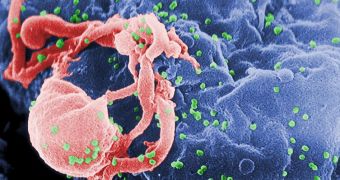For many years, healthcare experts have been recommending the drug AZT to HIV/AIDS patients, but at every turn the viral agent appeared to be able to elude the effects of the chemical. Now experts know how this is possible.
In a new scientific investigation, researchers at the Rutgers University managed to identify the defense mechanisms that the human immunodeficiency virus (HIV) uses to elude azidothymidine (AZT).
This chemical is a nucleoside analog reverse transcriptase inhibitor (NRTI)-class substance that has uses as an antiretroviral drug. Theoretically, it should pose serious problems to HIV.
The Rutgers team published its findings in the latest issue of the esteemed scientific journal Nature Structural & Molecular Biology, Science Blog reports.
The investigation now informs experts why the drug fails, and may in the near future provide research scientists with new avenues of research in creating better, more efficient drugs.
“What we’ve found is the detailed way in which the mutations act to promote the resistance,” explains the lead author of the new paper, expert Eddy Arnold.
He holds an appointment as a Board of Governors Professor of Chemistry and Chemical Biology at Rutgers, and is also a resident faculty member at the Center for Advanced Biotechnology and Medicine at the university.
“Instead of blocking the actions of AZT, the virus actually removes it, and it does so by using ATP, one of the most common cellular molecules,” the researcher goes on to say.
“This is an outstanding example of how sneaky HIV can be in thwarting the efficacy of therapeutic drugs,” Arnold adds. Biologists have been puzzled at how good HIV is when it comes to escaping drugs for decades.
The research is also very important because AZT is one of the primary substances used for preventing the transmission of HIV from carrier mothers to their unborn children.
Around the world, thousands of children are born with HIV annually, and their chances of survival into adulthood are extremely slim. Most cases occur in the Third World, where modern medicine is virtually non-existent.
The new investigation was funded by the US National Institutes of Health (NIH), through the National Institute of Allergy and Infectious Diseases (NIAID), and the National Institute of General Medical Sciences (NIGMS).

 14 DAY TRIAL //
14 DAY TRIAL //